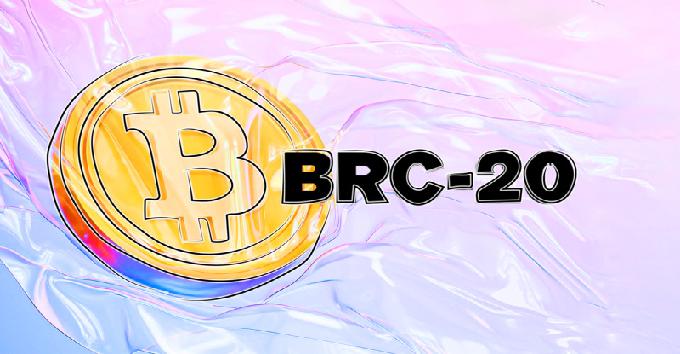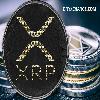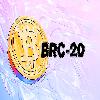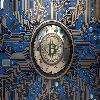While blockchain technology is coming up with new innovations every other day, Blockchain technology is always evolving, and one of the the latest innovations is the BRC-20 token standard. This experimental protocol introduces the minting and sending of fungible tokens on Bitcoin's blockchain, creating new possibilities, but also challenges.
What Is BRC-20?
BRC-20 uses ordinal inscription and is an experimental token standard. It was launched by an anonymous developer Domo on March 09, 2023. BRC-20 tokens are fungible tokens that are native to Bitcoin. And so, simply put, BRC-20 is an experiment in how to mint and transfer new fungible tokens on the Bitcoin blockchain.
The concept is inspired by ERC-20 tokens on the Ethereum network, but comes with its own unique mechanics and functions. Also, it’s important to note that, unlike ERC-20, this new BRC-20 token standard does not support smart contracts. nterestingly, unlike popular token standards on EVM blockchains, the BRC-20 standard does not use smart contracts; instead, it allows users to store a script file on Bitcoin and use that to associate tokens with specific satoshis. To deploy, mint, and transfer tokens, users can use BRC-20 tokens, which embed JSON data into ordinal inscriptions.
How Does BRC-20 Work?
Despite being only an experimental fungible token, BRC-20 tokens have generated a lot of interest in the Bitcoin community. BRC-20 has begun to be integration by ordinals infrastructure providers, such as wallet services and marketplaces, to allow their users to create and trade BRC-20 tokens
The functionality of BRC-20 tokens lies in the Bitcoin Ordinals protocol. This innovative protocol assigns numbers to satoshis — the smallest unit of Bitcoin — and provides a system for adding extra data to them through a process known as “inscription”.
BRC-20 tokens exploit the inscription feature of Ordinals through the application of JavaScript Object Notation (JSON) data. This enables the creation of token contracts, the minting of new tokens, and the transfer of these tokens across the Bitcoin network.
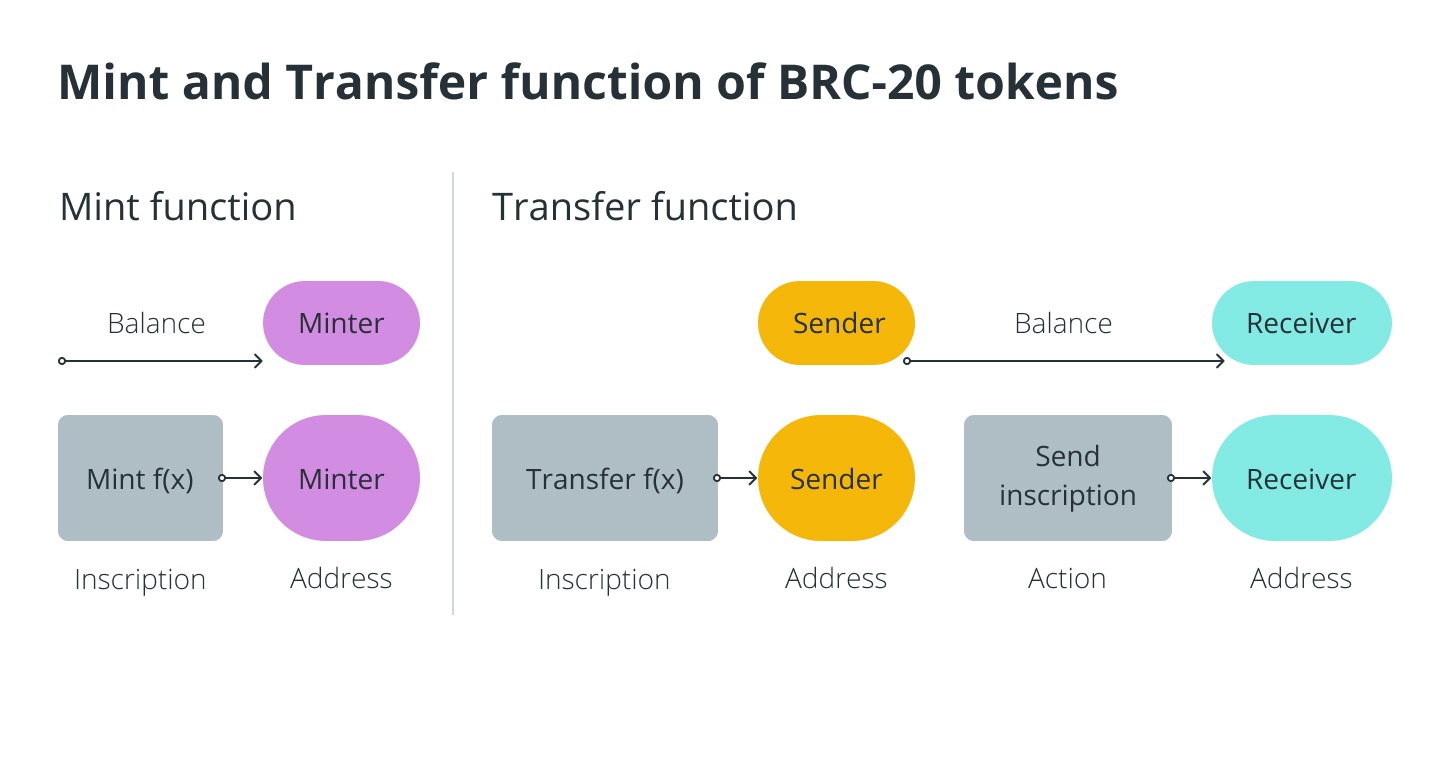
The first BRC-20 token to be deployed was named “ORDI”. Its creation sparked great interest and the emergence of numerous other BRC-20 tokens. As a result, a number of Bitcoin wallets soon developed the necessary tools to support this new token class.
What Are The Benefits Of BRC-20?
One of the most significant and basic things which can is done by BRC-20 token is to transfer the token to your peers as an indication of value transfer. These tokens can utilize the functionality of Bitcoin and can be moved or transferred to various wallets irrespective of the location of each wallet. Moreover, BRC-20 tokens take over the level of efficiency used by Bitcoins and transaction fees are charged natively in Bitcoin.
The BRC-20 token standard brings a variety of advantages to users and developers alike. Here are some of the key benefits:
- Simplicity The BRC-20 token standard utilizes a simplified tokenization mechanism that makes it easy to use. This is unlike other token standards that rely on intricate smart contracts. It sidesteps smart contracts, which can sometimes be complex to configure. This allows users to mint and transfer BRC-20 tokens without requiring specialized technical expertise.
- Security: BRC-20 tokens enjoy the inherent security of the Bitcoin network, which is underpinned by its robust PoW consensus mechanism. The strength of Bitcoin's security makes it difficult for malicious entities to compromise these tokens.
- Growth potential As more projects embrace the BRC-20 standard, innovation and novel use cases are bound to arise. This factor, coupled with the vast and diverse network user base, is bound to attract the attention of developers, investors and users, fostering the expansion and maturation of the BRC-20 token standard over time.
- Compatibility: BRC-20 tokens are compatible with the Bitcoin blockchain. This means they can be stored and sent just like Bitcoin, using the same network (and BRC-20 compatible wallets), making them a seamless addition to the ecosystem.
Impacts of BRC-20 token on transaction fees
Devising and transferring BRC-20 tokens requires more space on the blockchain, unlike peer-to-peer (P2P) transactions. For instance, transacting the traditional Bitcoin needs kilobytes, while BRC-20 which is layered on the ordinal inscription requires a space of 4MB in size. One of the key reasons for the increase in transaction fees is the difference between traditional NFTs and Ordinal Bitcoin NFTs. In ordinals all the data is directly stored on-chain so whatever data and instructions are summed up to the inscription becomes a part of the transaction. However, the case is very different from traditional Non-fungible tokens ( NFTs), which point to an external source of information, where the art or data is stored.
Cons of the BRC-20 standard
- Experimental Phase & Technical Uncertainty: The BRC-20 token standard is still in an experimental phase. Potential technical issues, bugs, or unforeseen consequences of the Ordinals protocol could lead to disruptions or even the loss of tokens.
- No smart contract functionality: Unlike other token standards, such as the Ethereum network’s ERC-20 standard, the BRC-20 standard lacks support for smart contracts. These blockchain-based snippets of code broaden the spectrum of capabilities on chains that support them. This is because they can be configured to enhance aspects such as automation, transparency, security and asset management. As such, the absence of smart contract support in the BRC-20 standard may limit its capabilities in coming areas.
- Network Congestion & Transaction Fees: The growth of BRC-20 tokens has caused significant congestion on the Bitcoin network and led to an increase in transaction fees. Daily transactions reached an all-time high of 682,000 in May 2023 — almost 40% higher than the previous peak in 2017. As such, the network has slowed considerably.
- Dependency on the Bitcoin blockchain: The BRC-20 standard is dependent on the Bitcoin blockchain, and this subjects it to the network's intrinsic constraints. The limitations include low scalability and slow transaction speeds. These problems are set to become more prominent as BRC-20 blockchain utility increases and congestion worsens. Notably, network congestion has gotten worse since the launch of the standard, which led to an avalanche of Bitcoin ordinals. Millions of ordinal inscriptions have been created in the last couple of months, and the number continues to grow.
- Limited Utility & Adoption: BRC-20 tokens don't yet have broad utility or mainstream adoption. While it’s expected that the ecosystem will grow over time, the current state of the market presents a risk for early adopters.
What’s the future of the BRC-20 token standard
The ceaseless evolution of the blockchain technology industry as well as its burgeoning community and expanding user base are elements that could increase the utility of the BRC-20 token standard. As with any technology that is open to evolution, the future of BRC-20 tokens is susceptible to the ebbs and flows of the blockchain industry and token-economy dynamics. Nonetheless, buoyed by the current frenzy, the use of the BRC-20 standard is likely to grow in the medium term.
Although the BRC-20 token standard presents unique possibilities, it’s not without its challenges, most notably increased network congestion, and the lack of smart contract capabilities. Moreover, the experimental status of these tokens underscores the need for caution and thorough research before diving in.
The future of BRC-20 tokens may be uncertain, but what's clear is that they have added an entirely new dimension to the Bitcoin network. As we look forward to more advancements, the story of BRC-20 serves as a reminder of the innovative spirit that continues to drive the crypto world forward.
Because the BRC-20 standard is still in the experimental phase, BRC-20 tokens are presently not considered ripe for investment. While these tokens hold promise and demonstrate potential within the realm of blockchain-based digital assets, their evolving status necessitates a discerning approach.

